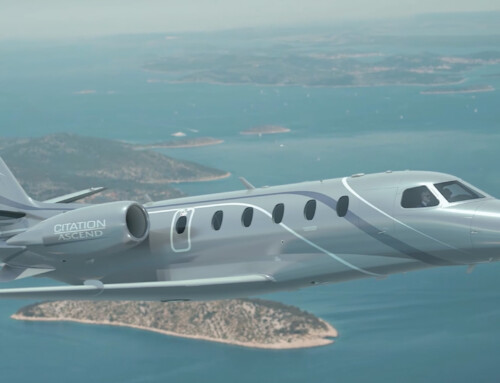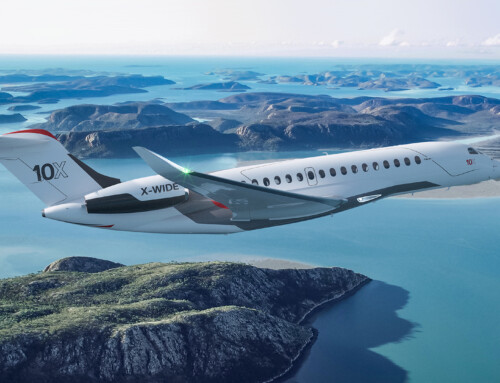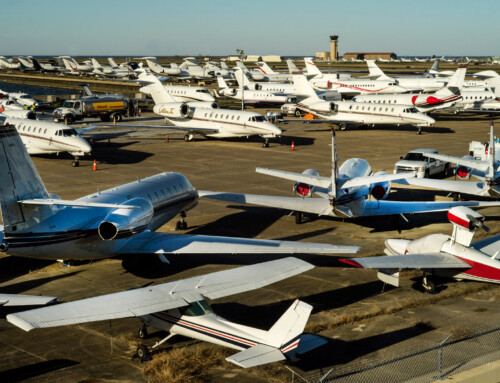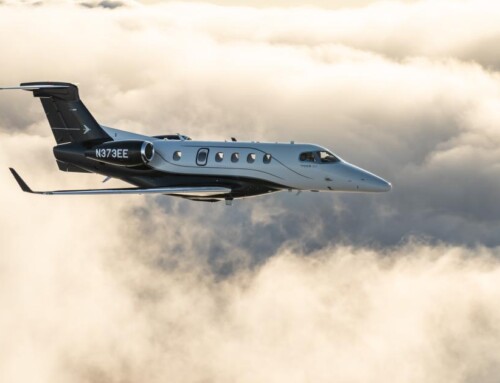The visit of the Gulfstream flagship G650ER to Dubai World Central allowed Scott Neal, Gulfstream’s senior vice-president of worldwide sales, the chance to show Dave Calderwood around the aircraft and explain why it is so vital to the Middle East.

Gulfstream
Walk up the airstairs to the entrance of Gulfstream’s flagship G650ER and you enter a world of calm, comfort and amazing space.
There are four living areas, galley, bathroom, baggage area and, of course, the high-tech cockpit up front. And, remember, this $70 million aircraft is also the fastest, longest-range, biggest-cabin business jet available.
“The G650 has been extremely well received,” said Scott Neal, Gulfstream’s senior vice-president of worldwide sales. “There are more than 200 G650s and ERs in service, and 25 of those are based here in the Middle East. It is a very popular aircraft in the region.
“The G650 has helped grow Gulfstream. It’s one of the most successful programmes we’ve ever had. The next available aircraft we can deliver to a customer is in the middle of 2018, so we have a strong backlog and a strong customer commitment.
“The Middle East is an extremely important market for Gulfstream and has been for 40 years. We have 120 aircraft based in the region.”
Gulfstream and parent company, General Dynamics, have invested in Jet Aviation’s (also a GD company) maintenance facility at Dubai International Airport and also $22 million in a parts centre at Dubai South.
“We want to make sure that we position support where our customers are based,” said Neal. “We want to be available and capable of supporting aircraft at their home base.”
Two all-new aircraft are on the way from Gulfstream, the G500 and G600.
The G500 is well into certification flight-testing, with five aircraft taking part, and the G600 made its first flight in December. Both are as fast as the G650, with a Mach 0.925 top speed, so how will they fit into the range?
“The 500 and 600 will sit below the 650 and 650ER. The G500 will have a range of 5,000nm at Mach 0.85, and the G600 6,200nm – so different price points, different range. We won’t be surprised if we have owners of the G500, G600 and G650 because they fill different missions,” said Neal.
Gulfstream also showed off its the super mid-size G280 at the recent Middle East Business Aviation Association show in Dubai. “We’re growing the fleet rapidly and we have more than 100 G280s in service. Importantly for operators in this part of the world and Europe, we have just achieved certification to fly into London City Airport with the G280,” said Neal.
Having the fastest business jets clearly isn’t enough for Gulfstream. It’s investing in research for supersonic flight, with technologies such as ‘quiet spike’ to reduce the effect of sonic booms.
Neal added: “Gulfstream has been very candid about continuing to invest in supersonic technology research. We don’t have a supersonic aircraft programme but we continue to look at what’s possible. If someone were to bring a supersonic aircraft to market, what would it look like, what would it have to do, what would be the regulatory considerations?
“I would like to think that a supersonic business jet will become a reality in the future… but it will be some time in the future.”
Middle Eastern airlines have been stepping up their game by upgrading first-class cabins and services and argue that they are competing with business aviation with ‘first-class plus’, but Neal doesn’t think it’s a worry.
“The owners of business aircraft understand they will never achieve the utility and flexibility on an airline that they can by owning a corporate Gulfstream,” he said. “They can fly when they want to, on their schedule, and not be subject to the whims of an airline, which may be carrying 200-400 people.
“They maintain the aircraft, they hire the pilots, and aircraft like the G650, G550 or G280 can get into the smaller airports that airliners can’t.”
What’s clear is that Gulfstream will continue to push the aviation boundaries. “We continue to stay ahead of regulatory requirements around the world, whether it be fuel efficiency or emissions. We try to stay at the forefront, try to keep leading-edge technology and design aircraft that will be useful for many, many years,” concluded Neal.
Source: Arabian Aerospace.

 Hawker-Beechcraft Hawker 400XP
Hawker-Beechcraft Hawker 400XP Cessna Citation V
Cessna Citation V Beechcraft Premier IA
Beechcraft Premier IA Beechcraft King Air 350
Beechcraft King Air 350








